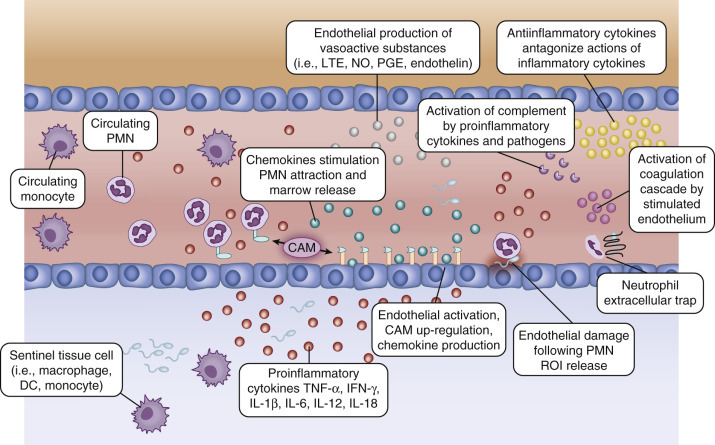Figure 152-4.

Cellular recruitment and endothelial activation following pathogen detection.
Pathogen-stimulated tissue/blood monocytes, dendritic cells, and macrophages release proinflammatory cytokines that activate the surrounding endothelium. Endothelial activation results in up-regulation of cell adhesion molecules, production of chemokines and vasoactive substances, activation of complement, and development of a procoagulant state. Recruitment of polymorphonuclear neutrophils (PMNs) occurs along the chemokine gradient surrounding the area of inflammation. Antiinflammatory cytokines counter the actions of proinflammatory cytokines to prevent excessive cellular activation and recruitment that can result in tissue damage and systemic inflammation. Endothelium can be damaged when PMNs release reactive oxygen intermediates or from neutrophil extracellular traps. CAM, Cell adhesion molecule; DC, dendritic cell; IFN, Interferon; IL, interleukin; LTE, leukotriene; NO, nitric oxide; PGE, prostaglandin E; ROI, reactive oxygen intermediate; TNF, tumor necrosis factor.
(From Wynn JL, Wong HR: Pathophysiology and treatment of septic shock in neonates. Clin Perinatol 37(2):439–479, 2010.)
